Author’s note: I wrote this post over the course of a week and pretty much let my fingers and distraction do the writing without really focusing on a goal. When I began editing, however, I realized I had drifted completely off course in a sort of self-indulging monologue.
I considered pruning the story heavily but ended up keeping it as-is.
The reason is simple: while my train of thoughts doesn’t really have anything to do with the Kruger in what follows, it actually matches a pattern that emerges when slow-brewing trouble occurs. Not the fight-or-flight emergency that requires fast thinking and instinctive response, but the gradual crisis that lets you smell its approach, feel its punch and sustain its damage while you try to manage it and yourself, and have ample time to dwell in the what if.
So the digression below mirrors my thoughts on the way to Skukuza when the outcome was uncertain. Faced with mechanical issues, I found myself digging into the past for a solution, and finding none I simply focused on my empathy with machines, with techno-mechanical things that support our everyday life and with which I feel at ease and in control.
I believe that, to some extent, the tools around us feel our presence just like animals do, and respond to the vibes we send them.
In retrospect, this all sounds like a trivial event, a wannabe catastrophe with only twenty percent reality, and eighty percent psychology. But on that day, we really needed to trust the Landcruiser, and for it to trust us.
Leaving Satara, we began feeling the world’s gravity again, as we dropped fast towards the southern camp of Skukuza and our following exit from the park. Even in South Africa—or maybe especially there—reality exerts a slight weight on one’s shoulders. Floating around the park like divers over a coral bed, tropical fish all around and bubbles reaching for the sun, we had just about left the ground and become airborne. Yet a tether remained.
As miles ticked away, as camp gates were opened and closed, the random, jerky pattern of animal sightings marking the stop-and-go rhythm of our days, we had been eyeing the gloomy orange light of the timing belt throughout the trip, constant reminder that something always remains to be done, that no freedom is ever assured.
We stopped for breakfast at an isolated waterwhole where a solitary hippo and a pair of crocodiles were sharing the morning. This was not a picnic spot and we remained in the car, relaxing our windows down while we had coffee and rusks. Then all of a sudden, an old lion stood up from the bushes he had been lying in across the water, and like a king traveling through his lands, he lazily moved to deeper shade. We looked around us with a frown and eased the windows up.
Further down on the day’s leg, a sign indicated a scenic picnic spot above the Orpen Dam. It was a short distance off the main dirt road and we decided we could use a bathroom break. Climbing a steep hill on a rough road, we hit an unexpected bump that reminded us of Lesotho’s Sani Pass, and once over the top a small rest area appeared at the bottom of a slope.
As we were driving down slowly, the engine began coughing. Coming to a stop under a tarp-covered shaded parking slot, Marie shifted the transmission to Park. The Landcruiser idled very roughly in a shaky fashion similar to that of an engine firing on only three cylinders. It was actually bad enough that driving on immediately seemed impossible.
We looked at each other, alarmed. This was not a good place to break down.
We were reminded that a somewhat similar incident had happened a couple of days before our departure from Cape Town as we were driving down the highway to Muizenberg. The Landcruiser had began stuttering but because we had been driving at 100 km/h, we had had a hard time differentiating between an engine and steering or direction issue. We had vacated the highway at the first exit, stopped, checked all tires, found nothing, gone around the block and back on the highway, up to speed, and the problem had never come back so we had chosen to ignore it, mostly because of the Landcruiser’s stellar reliability record.
Within a few seconds, the Kruger Park, game watching, our vacation and even my passion for boerewors had all receded to the deepest recesses of our minds. We switched to emergency mode and took the two only practical measures that were available: Marie went to engage the picnic spot attendant and I lifted the hood.
While this did not sound like a timing belt problem, it was the first thing that had come to us. The dreadful feeling of having gambled and lost washed over me like a tidal wave. Unfamiliar with diesel engines, I finally located what I figured was the timing belt casing. It was secured by strong metal clips and wedged in a way that would not allow easy opening. Armed with my Leatherman tool, I was able to snap off three of the clips and peeked inside the casing.
The belt was in place and appeared intact. I could see fresh markings on it and tension seemed good. In fact it looked so good that I wondered how a 100,000 kilometers old belt could have survived so fresh. I pondered whether it might have been replaced during the previous inspection but the warning light never reset.
There were a few other vehicles parked around us. Seeing me bent under the hood, one family ignored the scene and drove away. Another man came to see what was up, but he knew even less than I did about diesels and could not help.
Marie came back from her staff interview with bad news. We were, for all practical purposes, on our own.
The park employee stationed here had been nice and forthcoming, but had limited resources and spoke a mystifying mix of English, Afrikaans and what she thought was Tsonga. He said he biked to this remote spot every morning from his staff housing at Tshokwane, another picnic spot six kilometers away, a rifle on his shoulder. He had no tools nor mechanical knowledge. He thought that Tshokwane would have communications with the outside and that Skukuza would probably have a mechanic on staff.
We brainstormed. There were no good options, no best-case scenarios other than sheer luck. Whipping out our phones, we had to resign ourselves to the fact that despite the existence of park towers, we had no signal. We did not want to be caught in this remote location, alone, after dark. Yet it was at least a mock-up of civilization. It had bathrooms and we knew someone would show up in the morning. On the other hand if the Landcruiser died out there on the side of a road, complications would be even more enormous, amplified by the fact that we were driving a borrowed vehicle and that this was very much a love affair.
It crossed my mind that should we not make it back, SANPark people would probably forward all our lion pictures to the cat in NYC, who would put them all on the wall above his litter tray, next to his Obama cartoon. That was a consolation.
I did a short engine run and drove around the open parking area. It still coughed and once at idle, the entire vehicle shook wildly. My missing cylinder theory was shaping up now that I had found a seemingly intact timing belt. But what would have caused it? We had hit a hard bump seconds before the trouble had started. Could we have had picked up contaminated diesel somewhere in the park and the bump had lifted impurities up to the injector pump, clogging it? That sounded more like a plane problem. So could the pump itself be defective?
This was a mash-up of my ignorance of diesel engines and my relative familiarity with gas engines which I had studied back in my early flying days on single and twin-engine piston airplanes, and later worked on when I had to maintain our dive boat outboards in Little Cayman. As we took a few minutes to go check out the viewpoint in an effort to relax and make the right decision, I drifted into a vague daydream.
I have always been attracted to mechanical things and I love tools of all kinds. My dad was a skilled craftsman and he taught me to appreciate and respect tools. He would grease his saws and Opinel blades with lard, kept a clean and well organized toolbox, and built all our rustic house furniture himself over the years, with wood at times salvaged from beaches after major storms.
He used very basic tools, none electric. A strong vice, or étau, was fastened to a workbench. A hand drill, or chignole, would slowly spit out twisted wood chips as it drilled holes. A chisel or ciseau a bois, was used to chip and carve. A handsaw did the cutting. A plane, or rabot, evened planks out and made them flat and smooth. Pegs, or chevilles, and glue replaced nails and screws. The smells of various types of wood, resin, varnish and pâte à bois would fill the terrace.
The wall-wide bookshelf, dining-room table and benches (yes we had two benches rather than individual chairs to sit on for most of my youth), open bar, record player commode, sofa bed, tall piece of furniture that held all my toys and secrets and other pieces I have forgotten were made of wood treated with brou de noix, varnished and decorated with wrought iron. A wooden lectern held an open copy of an old Larousse encyclopedia in a corner.
Other bizarre marvels came out of my dad’s hands. An old copper toilet floater pierced with holes held roses from the garden. An even older carburetor, de-greased, mounted on a plate of olive wood and painted in gold burnt incense, silky smoke oozing out of the many orifices. Our low chess table was designed with bi-color ceramic tiles laid in cement and circled with wrought iron. He had chiseled and carved a very convincing Inca face on a flat slate of stone that hung on a wall like an archaeological trophy. My first and last aquarium was a huge jar of peanut butter held in place on a pedestal by a wrought iron circle. I’m afraid the poor animals’ fate was less impressive than their prison.
Yet strangely, as a kid, I didn’t have much desire to build despite his example. My interest was in dis-assembly, a much more interesting activity with fascinating destructive consequences. Until way into my adult years, I took great pleasure in taking things apart. Electronics, optics, mechanical this-and-that—I would spread them out onto a table in all their indignant glory.
Eventually though, I began to enjoy the rebuilding process even more. Complex objects had become puzzles. So when in Little Cayman, circa 2002, I found myself responsible for the daily maintenance of our boat’s electronics, two outboard engines and our breathing air compressor, I self-taught myself the art of making a multitude of little inert things out of a bigger (mal)functioning one, and then putting them all back together in reverse order without any lone pieces left at the end.
There is something rather zen about handling tools and interpreting the complexity of a mechanical system. It clears my mind of all parasite thoughts, just like only flying and diving truly manage to do so. Tools could be the sixth sense. They deserve respect and yield wisdom. Good tools, if well treated, will let one accomplish near-miracles.
So finding myself far into the Kruger Park with a sick engine whose complexity eluded me, I was torn between the secret desire to take it apart and the absolute certainty that I was neither equipped nor knowledgeable enough to do so.
Finally, we decided to take our chances out in the open. I grabbed the wheel and we drove on slowly, up the hill and back down, and as we reached the flats again, I told Marie not to worry—I was just going to step on the gas hard to see “what happened”.
Nothing did, so I slowed down and kept driving. Then we realized our hearts had calmed down. It took a moment for the truth to sink in. The engine was now running smoothly.
We were arriving at an intersection. Right would lead us to the intermediate safety of Tshokwane but away from our intended route south. Left was the way to Skukuza, 50 kilometers away. It was a quick decision. We turned left.
For some 20 kilometers, we wound our way through a mournfully burnt landscape. Whether the fire had been controlled or not, it had been immense. Our hearts were beating along with the Landcruiser’s humming and every bump on the road was met with nervousness. But the engine ran impeccably.
Finding a sign we did not anticipate on the road, we examined the map and realized we had taken a wrong turn and gone deep into a large detour. Good old Murphy was lurking. Weighing distance versus road quality and isolation, we decided to turn around and backtrack in order to remain on a main axis with better chances of help if our luck faded.
We made Skukuza without any further hiccups. It was the largest camp we had visited thus far and felt like a small city. While all other camps and accommodations had been squeaky clean, Skukuza was a bit of a dump. The rondavel was dirty, doors did not close well, there were neither sink nor cooking plates on the porch, which was all enclosed in netting.
The crowd was different, too. Very accessible, this camp was probably more of a quick weekend getaway and it is possible that the SANParks staff here had given up. A dirty towel left behind in the shower by the cleaning ladies when we moved in seemed to indicate so.
We had a beer on the main restaurant’s large patio right over the Sabie River at sunset, cooked on the communal hot plates and had dinner in the mosquito-screen-enclosed patio of our rondavel by candle light.
We had already mentally disconnected from the park and the thought of hitting the road the next day wasn’t such a pleasant one. Some 2000 kilometers remained and the Landcruiser would have to tough it out.
We had earlier cranked up our cell phones on international roaming and made $300 worth of calls to various Toyota dealerships, and to the vehicle owner who sure was not happy about the turn of events. But all agreed that taking our chances on a drive back down to Cape Town was now the best option.
It was not the glorious departure one dreams of after seeing so much beauty and wilderness. The evening was bleak.
But danger had come close and yet spared us. We were having a melancholic toast in the relative security of a main camp when we could have been stranded somewhere on the side of a deserted road, surrounded by predators and having to take turns shining a light around while the other ventured out of the car, necessity calling.
We agreed it could have been much worse.
But deep inside, I feared I might be losing the edge. New York does very little for my self-sufficiency and ability to deal with trouble autonomously, efficiently and creatively. In a squeeze, the single-finger three-tap solution is only a pocket or handbag away: 9-1-1. Besides, what could go wrong? The subway runs around the clock. There are cops everywhere. First respondents get to you within 3 minutes (but of course you should greet them with a medical insurance card, held out of your coma). One isn’t expected to improvise but rather to follow the rules and stay low. To be alike the multitude. To shut up and not think too much.
I do not know if I can pick up a thermal anymore. I am not sure I can reopen a frontal collapse of my canopy. I doubt I can shoot an ILS approach down to the minimums in the clouds. I wonder if I would be able to free-dive down to fifty feet or make an emergency ascent from a hundred on one breath of air. I have a growing aversion to heights and the beautiful rock climbs of Ste Victoire are now off-limits. All I remember of Aikido is iriminage and an endearing little old man with a white beard and the energy of a volcano, called O-Sensei.
As Pink Floyd would say, I have become comfortably numb.
It was a long night in Skukuza.
«Slingshot to Kruger» Series
Want to read the entire series of stories? Start here
Already reading sequentially?
Previous story: Slingshot to Kruger, Part 8 – The Hunters and the Hunted
Next story: Slingshot to Kruger, Part 10 – The Man Who Loved Milk
Marie’s recount: Kruger National Park
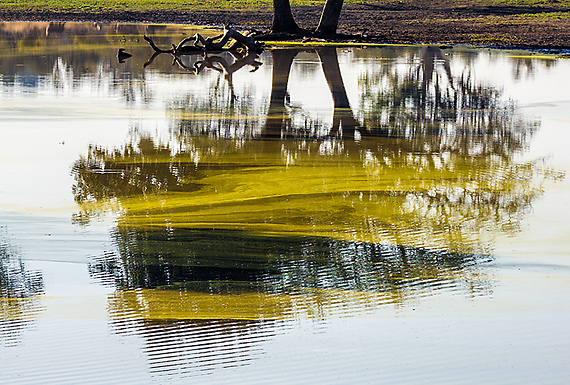
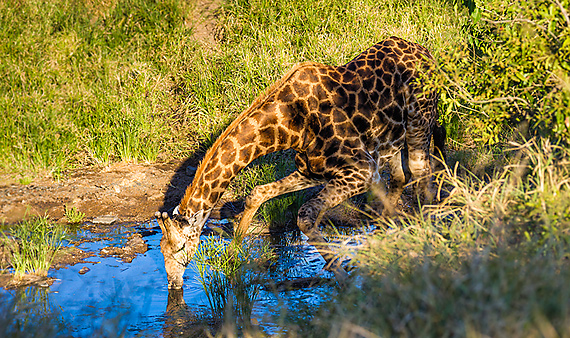
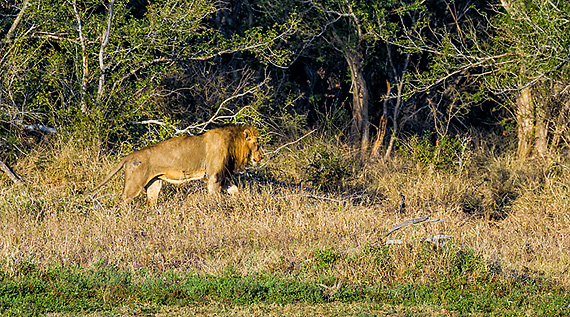
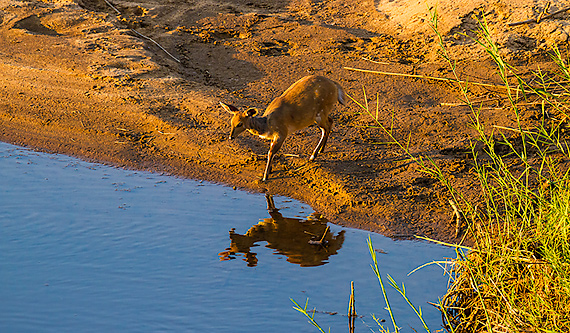
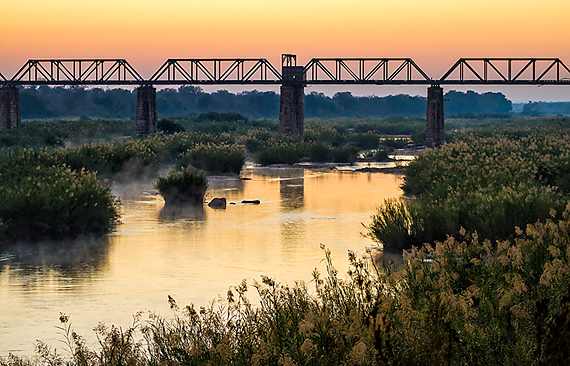
Comments
Kath
Vince
Marie
Dreamer
Vince
Marie
Vince
Marie
Sigrid
Vince
Vince
Marie
frank@nycg